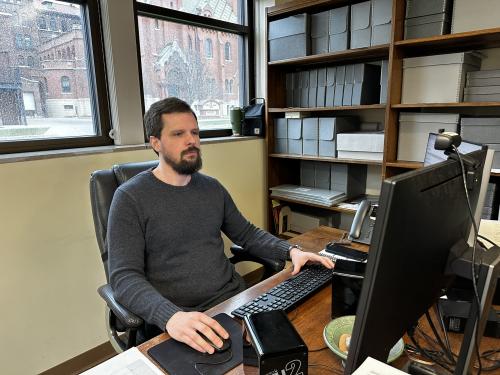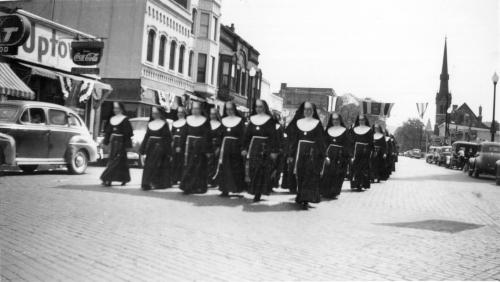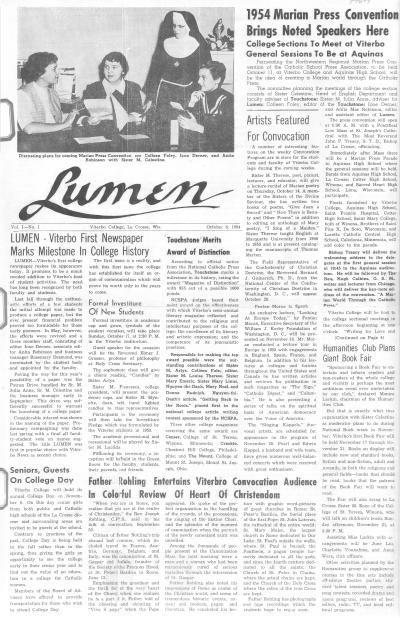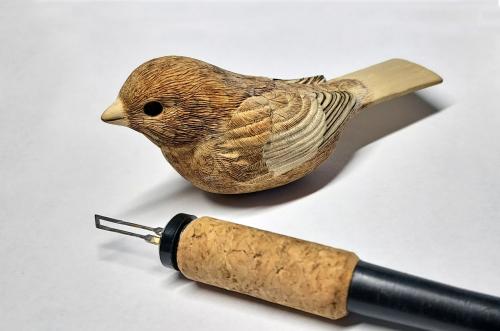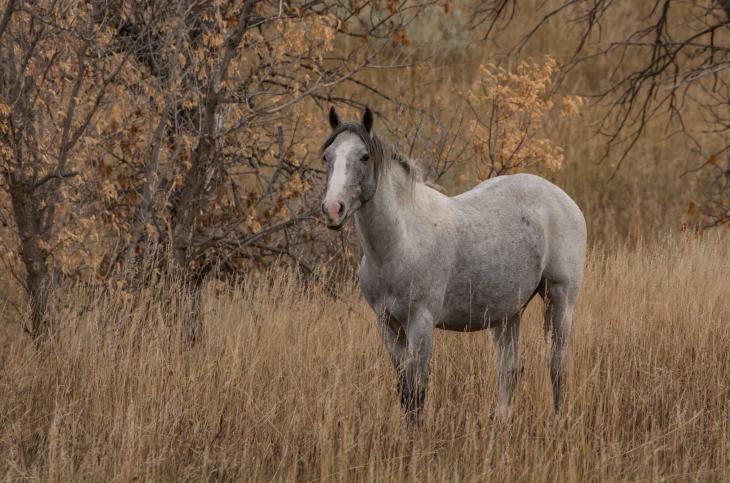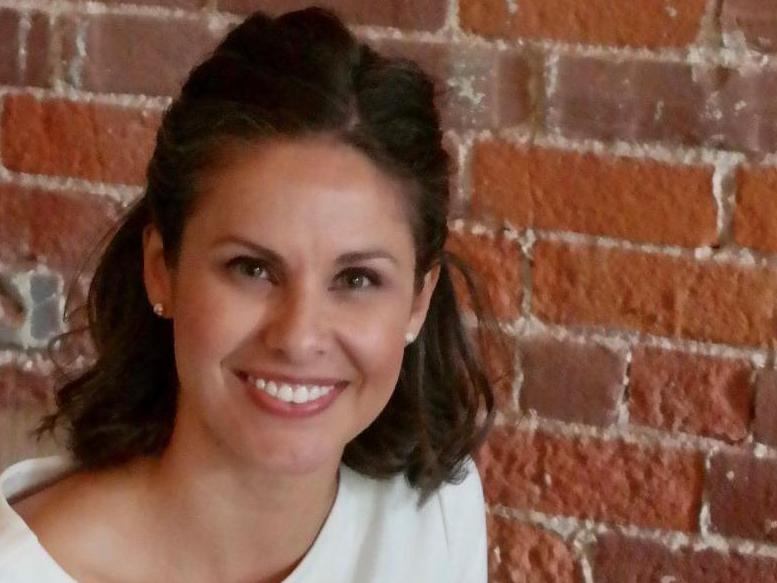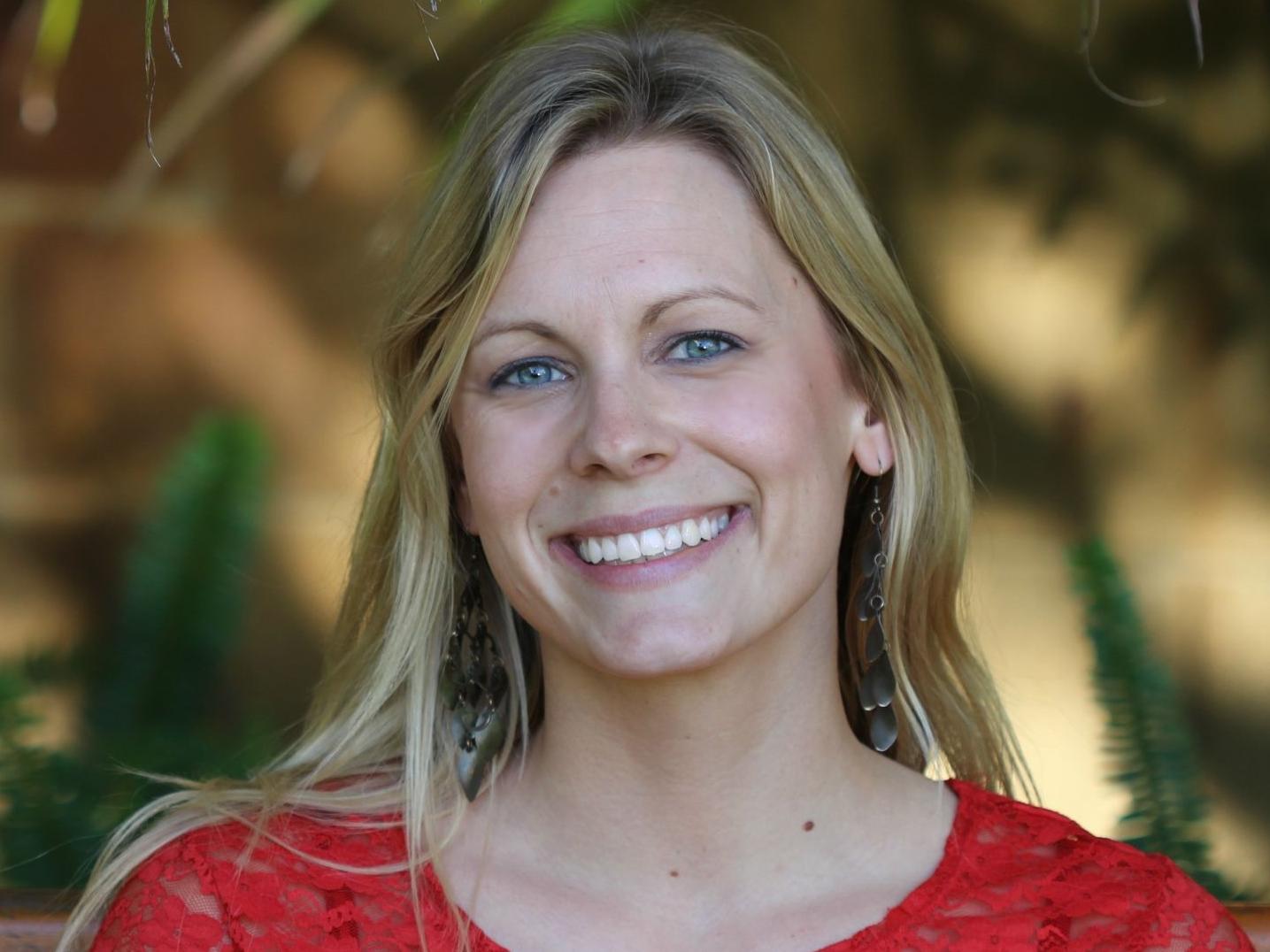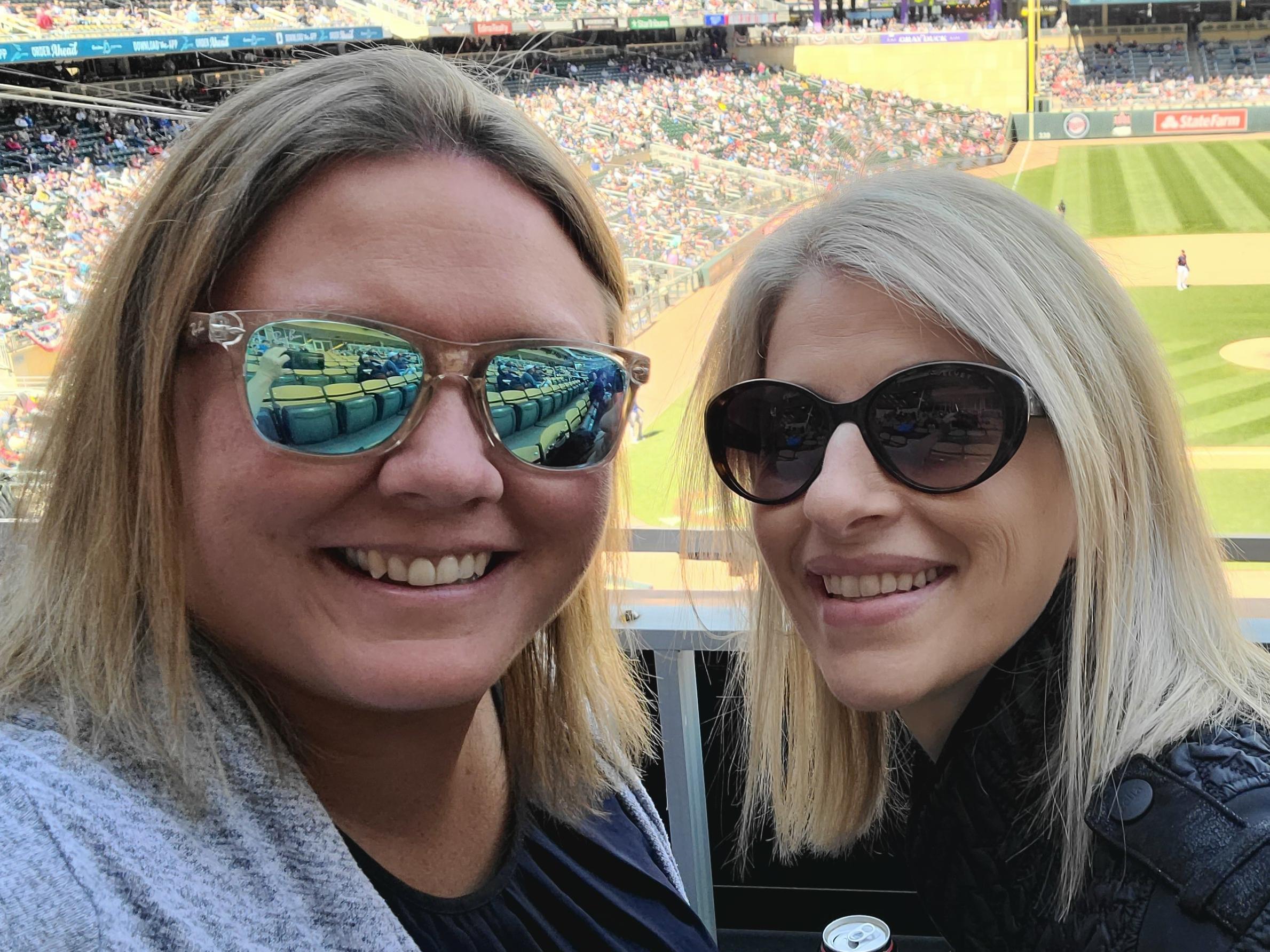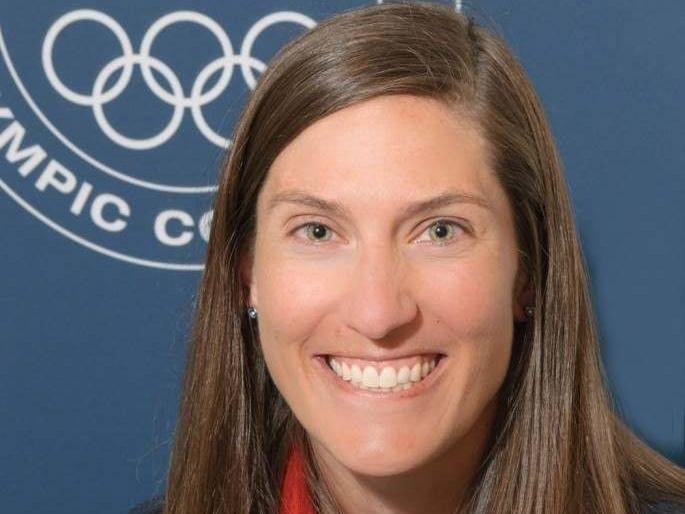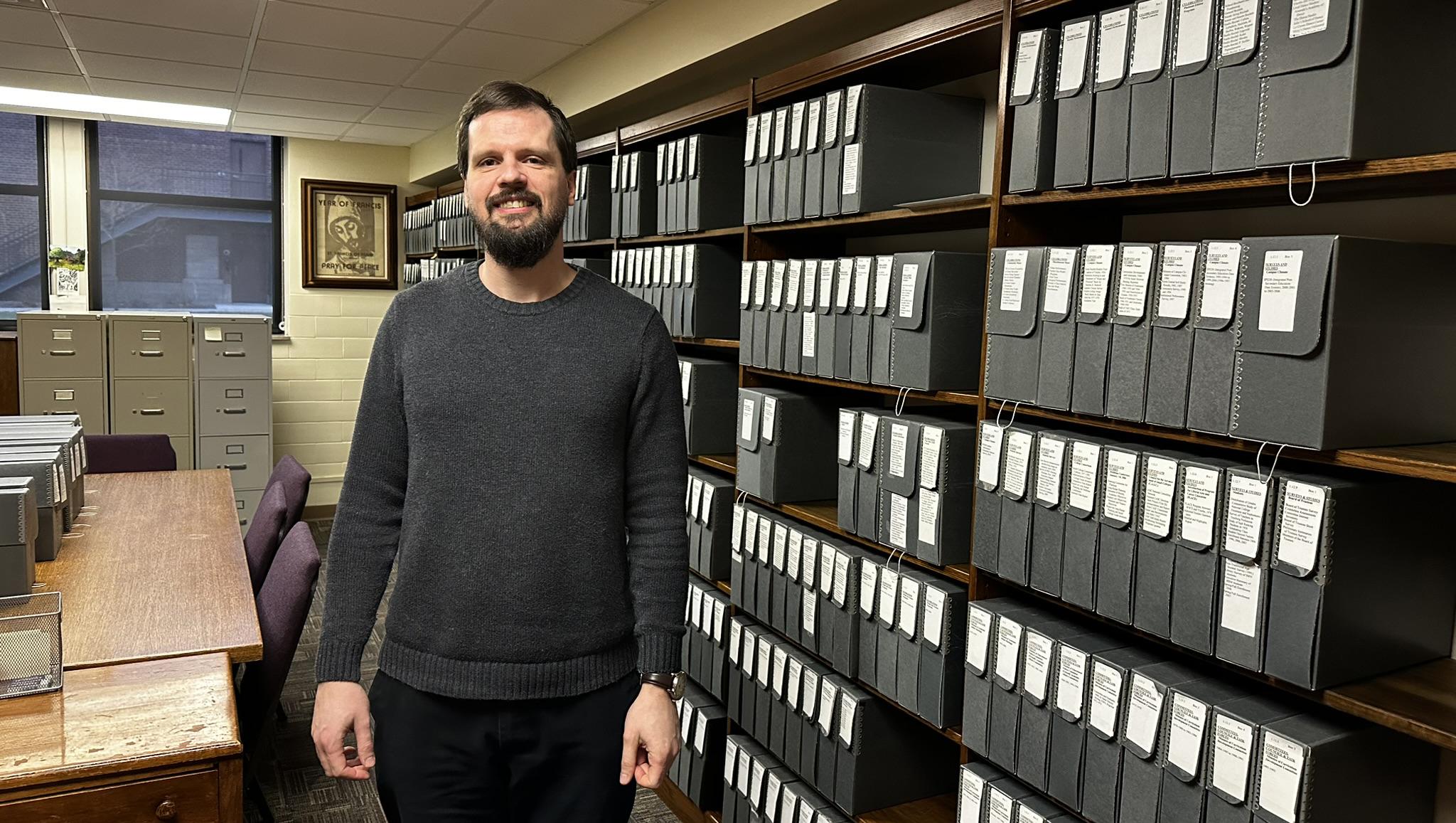
For almost 10 years, Jason Skoog ’06 has been in charge of acquiring and preserving the myriad pieces of history that tell Viterbo’s long story. That he’s the one doing it is a bit poetic, as he has a history with Viterbo himself.
In 2002, fresh from graduating from high school in La Crescent, Minn., Skoog came to Viterbo intent on studying graphic design. He’d always loved drawing, and he had entertained ideas of a career in advertising, or maybe teaching art or becoming an architect.
He was offered a Viterbo graphic design scholarship honoring Carlene Unser, FSPA. That helped him make his choice of college, but that wasn’t the only factor.
“The money was important, but I also felt like the people here believed in me and saw potential,” Skoog said in an interview in his ground-level corner office in Murphy Center where he does his work as archives and systems librarian. “It was remarkable how much it felt like home when I came for a tour. I can still remember the tour guide and how genuinely friendly she was.”
By the time he graduated summa cum laude with a Bachelor of Fine Arts degree in studio art painting (and a minor in philosophy), he had learned a great deal. Perhaps the most valuable thing he learned was discovering that his initial graphic design path wasn’t best for him. He discovered his current path thanks to a work study job.
He ended up with a work study position in the library because it was the only choice left for him, but it turned out to be a great stroke of luck. He loved it. He worked in the library for most of his four years at Viterbo, going on to earn a master’s degree in library and information studies from the University of Wisconsin-Madison.
When he graduated from UW, he was ready for a GLAM career. GLAM is shorthand for the types of places where his training had prepared him for a career: galleries, libraries, archives, and museums. He could have ended up so many places, but Viterbo called him home with a perfect (if temporary) job for him.
In the summer and fall of 2011, Skoog worked as curator of an art exhibition celebrating the 40th anniversary of Viterbo’s Fine Arts Center. He researched the history of art at Viterbo, curated submissions from alumni for exhibition, and photographed and scanned art for the exhibition catalog.
By January 2012, Skoog was back working full-time in the library, and less than two years later he took on his duties as archivist and systems librarian. His work as the library’s IT guru is vital to its operation, but he’s best known as keeper of the archives.
When he started, the entire archives operation was housed in the room next to Skoog’s office that now is home to an impressive collection of cataloged materials. In the distant past, Skoog discovered, both of those rooms were one big room in which home economics was taught.
Before the Viterbo library was moved from the third floor where the Academic Resource Center is now to its current ground-level location
One of the biggest developments in the archives since Skoog took over as archivist has been the cataloging and digitization of all the editions of the student newspaper, The Lumen, which go back to 1954. “That has been such a valuable resource,” he said.
Digitizing photos, videos, audio recordings, and other documents in a wide variety of formats and indexing them so they can more easily be found has been a major thrust in Skoog’s time in the archives. He’s been instrumental in unearthing the historic images that adorn the halls of Murphy Center, President Rick Trietley’s inauguration banners, and the History Walk under Murphy’s portico, part of the Alumni Plaza project.
“One thing I love about the archives is the old photos,” he said. “They spark my imagination to think about what it used to be like here at Viterbo.”
He also enjoys helping with the historical treasure hunts people undertake, including faculty, staff, students, alumni, community members, and researchers. One person, for example, was researching the history of stethoscopes and wanted to find information about their introduction and use at the St. Francis School of Nursing. And a few years back he helped the producers of the documentary about Thea Bowman, FSPA ’65 in their quest to present a historically accurate picture of Viterbo’s most well known alumna.
Sometimes, Skoog has a Viterbo alum wander in wondering if he can find anything in the archives about them, which can be fun. “It’s like detective work. You look in one box and that leads you to another box,” he said. “I have learned over time where stuff is, and it’s in my head where to go.”
There also have been times when the university’s very existence has depended on his work. When Viterbo went through its 2022 reaccreditation process, he was the evidence file manager, organizing some 700 documents that were part of the university’s report to the Higher Learning Commission.
Viterbo has reaccreditation to thank for even having an archive. An accreditation review in the 1980s recommended a larger library, and in 1991, the archives opened in the newly dedicated Todd Wehr Memorial Library, named in honor of the steel magnate and philanthropist whose foundation’s donation helped finance it.
The first Viterbo archivist was Frances Claire Mezera, FSPA, who had previously been library director. She served as archivist for several years and continued to volunteer in the archives until 2006.
The archives has come a long way since 1991, organizing and preserving so many pieces of the past. Skoog also is looking to the future, developing policies and systems for adding current items to the archives that will one day be historical. Preservation in the past has been hit or miss, but maybe researchers in the next century will be able to visit the archives and get a good sense of what it was like at Viterbo in the 2020s.

